Skip to content

Image: Foundry / Shutterstock
CES is a big show for laptops, as many of the best models for the coming year appear first at the show. This year is especially notable, as both Intel and AMD are amid launching new generations of mobile processors (though it does seem most laptop makers are leaning towards Intel). Most of the laptops at CES 2024 look rather conventional, with a few exceptions, but dial the performance up to 11. There’s also a dizzying array of Mini-LED and OLED displays at the show.
These are the best laptops of CES 2024.
Lenovo Yoga 9i Pro 16-inch (Gen 9)

IDG / Matthew Smith
Lenovo’s Yoga 9i line-up was, for my money, the most impressive Windows laptop line of 2023. It had everything: attractive design, a beautiful Mini-LED display, a nice keyboard and touchpad, and good all-around performance that included optional Nvidia graphics. Even the pricing was competitive.
The new Yoga 9i Pro 16-inch isn’t much different from last year’s model, to be honest—but that’s fine because it was already great. So, what is new? The 2024 model brings Intel Core Ultra processors (up to Intel Core Ultra 9) and a larger 84 watt-hour battery. In short, it’s quicker than last year’s model yet should last a tad longer on a charge.
The Lenovo Yoga 9i Pro 16-inch Gen 9 will be available in April 2024 starting at $1,699.99.
Lenovo Thinkbook 13x (Gen 4)
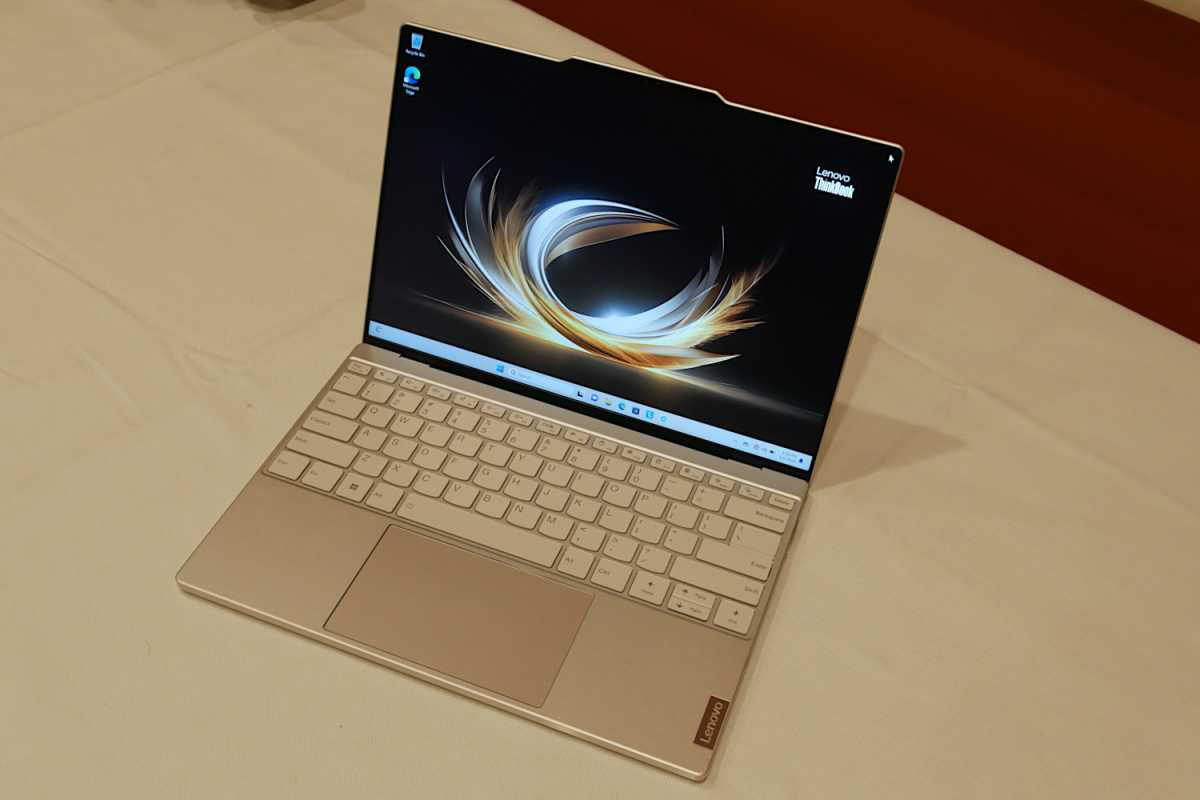
IDG / Matthew Smith
The Lenovo Thinkbook 13x is the world’s first laptop with a corrosion-resistant stainless magnesium chassis.
Fans of the brand may remember the company has long used magnesium alloy to reduce size and weight, but laptops that used the material required a protective finish that often felt unpleasant or inexpensive. The Thinkbook 13x doesn’t have that problem. It’s extremely thin and light, measuring just 12.9mm thick and weighing a mere 2.2 pounds to start, but has the metallic look and feel shoppers expect.
That’s not its only trick. The laptop also supports Lenovos’ Magicbay, a family of accessories (including a 4K webcam, 4G hotspot, and studio light) that attach magnetically at the top of the display. The internal hardware is up-to-date, too, with support for Intel Core Ultra processors and a 74 watt-hour battery.
The Lenovo Thinkbook 13x Gen 4 will arrive in Q1 2024 for $1,399.
MSI Titan HX 18

IDG / Matthew Smith
MSI’s Titan laptops are nothing if not bonkers and the new Titan HX 18 is no exception. The flagship 18-inch gaming laptop comes with 14th-gen Intel Core i9 processors, up to Nvidia RTX 4090 graphics, and a 4K 240Hz Mini-LED display. It also supports up to 128GB of RAM and 6TB of solid state storage.
But the laptop’s design deserves equal attention. MSI’s new Titan HX 18 has a large, seamless, haptic, RGB-lit touchpad that looks and feels great. That comes alongside a mechanical keyboard with Cherry MX key switches. It’s a hefty laptop, as well, with a rock-solid design that looks and feels more elegant than the 2023 model. Make no mistake, however, this laptop is still a bruiser and not meant for frequent travel.
The MSI Titan HX 18 will retail carry an MSRP of $4,999 when it arrives later this year.
HP Omen Transcend 14
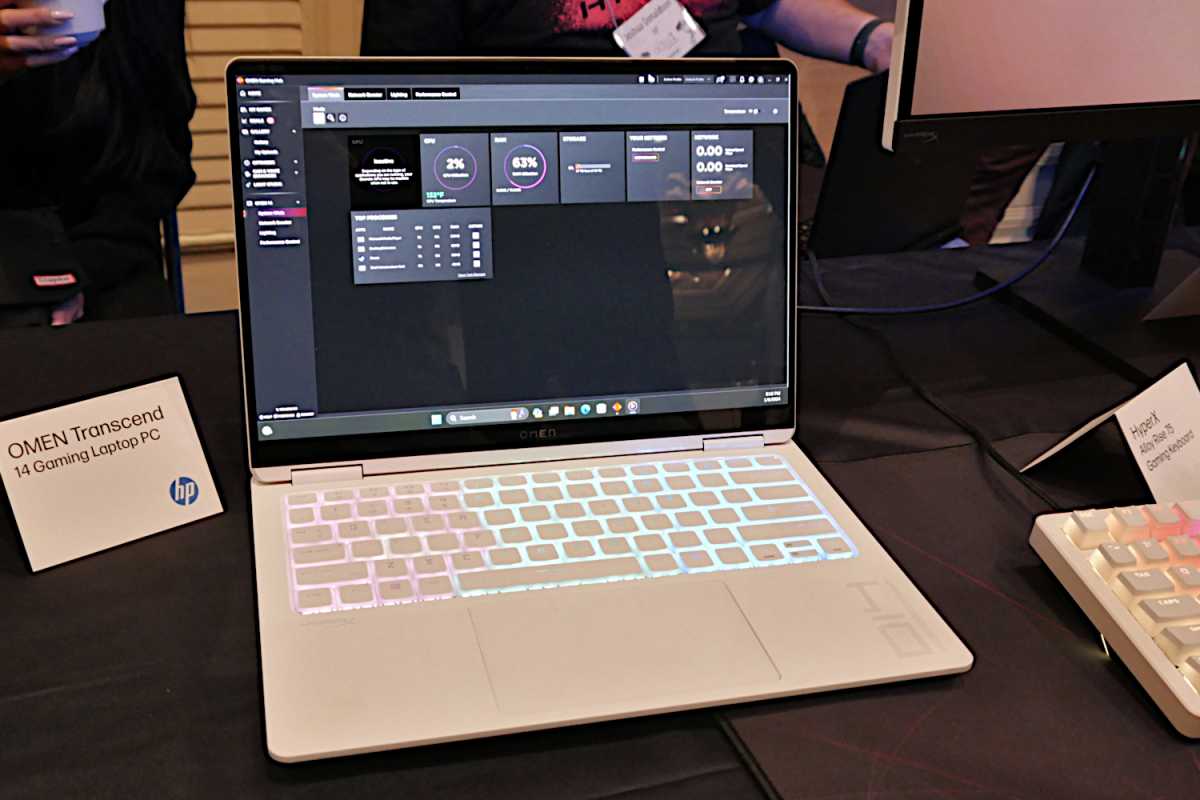
IDG / Matthew Smith
HP went small at CES 2024 with the Omen Transcend 14, which claimed to be the world’s lightest 14-inch gaming laptop (a title it lost within hours to the Asus ROG Zephyrus G14, but still). It weighs a feathery 3.6 pounds. The Razer Blade 14 by comparison starts at about 3.9 pounds. The Transcend 14 is a looker, too, with an alluring white colorway and RGB keyboard.
The laptop’s specifications are impressive for its size. It packs up to an Intel Core 9 Ultra 185H processor, up to Nvidia RTX 4070 graphics, and a 14-inch 2.8K OLED display with a 120Hz refresh rate and Variable Refresh Rate Support. The laptop is powered by a 140-watt USB-C charger, as well, which ships with the laptop.
The HP Omen Transcend 14 is available for pre-order now starting at $1,499.99.
Asus ROG Strix Scar 18
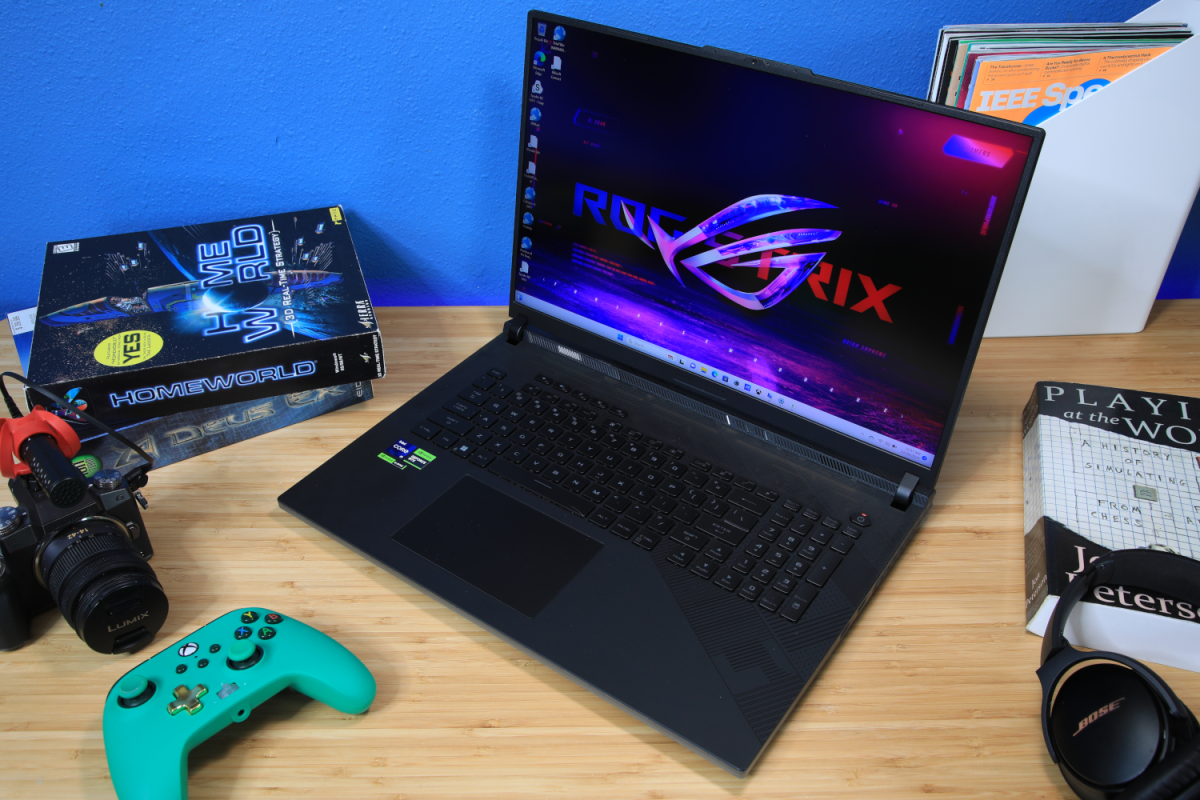
IDG / Matthew Smith
There’s a lot to talk about with the Asus ROG Strix Scar 18, but let’s start with the display. As I covered in my preview of Asus’ new laptop displays, the Strix Scar 18 packs a Mini-LED display with an excellent 2,304 dimming zones. That’s more than twice last year’s ROG Flow X16, which had 1,024 dimming zones, and it dramatically boosts contrast in high-brightness scenes. The display is a top performer in other areas, too, with great color accuracy and wide color gamut.
Display aside, the Stris Scar 18 has the high-end hardware you’d expect including up to an Intel Core i9 14900HX processor and up to Nvidia RTX 4090 graphics. RAM tops out at 64GB and solid state storage runs up to 4TB. It’s a beefy laptop, weighing in at about 7.3 pounds, but that’s to be expected from a gaming laptop with its caliber of hardware.
The Asus ROG Strix Scar 18 starts at $2,999.99 and should ship in the first quarter of 2024.
Asus Zephyrus G16

IDG / Matthew Smith
Next up is the Asus Zephyrus G16 and, once, again, the display takes center stage. The new Zephyrus G16 has a 2560×1600 OLED display with a maximum refresh rate of 240Hz. It also crucially supports G-Sync, something that wasn’t available in OLED laptops prior to those announced at CES 2024. The G16’s display looks gorgeous in motion with crisp detail and deep black levels.
The Zephyrus G16 is otherwise surprisingly practical. It has a rigid machined aluminum chassis that keeps weight down to about 3.3 pounds, and the laptop measures just .64 inches thick. Despite its slim profile, it still packs a 90 watt-hour battery. The internals include an Intel Core Ultra 185H processor and up to Nvidia RTX 4090 graphics.
Asus expects to ship the ROG Zephyrus G16 in the first quarter of 2024, but pricing hasn’t been announced.
Samsung Galaxy Book4 Ultra

IDG / Matthew Smith
Samsung’s Galaxy Book4 Ultra is a 16-inch high-performance thin-and-light with up to an Intel Core 9 Ultra processor and up to Nvidia RTX 4070 graphics. RAM goes up to 64GB and solid state storage peaks at 2TB. It also packs a 2880×1800 OLED touchscreen with a refresh rate up to 120Hz.
All of this hardware is stuffed in an elegant, professional clamshell chassis that tips the scales at roughly 4.1 pounds and measures no more than 0.65 inches thick. That’s impressive, given the specifications. Samsung also provides a 140 watt USB-C Adapter that can be used to charge the laptop over USB-C.
Samsung hasn’t announced pricing, but the Galaxy Book4 Ultra will be available in Korea this month, with other countries to follow soon after.
Asus Zenbook Duo

IDG / Matthew Smith
Asus’ latest wild dual-screen laptop is the Zenbook Duo, a double-screen clamshell similar to Lenovo’s Yoga Book 9i. Like the Lenovo, Asus’ laptop provides two OLED touchscreens which can be used in a vertical or horizontal orientation. However, Asus switches things up with the keyboard and touchpad.
The Yoga Book 9i had a physical keyboard but relied on a virtual touchpad on the lower display, which wasn’t great. The Zenbook Duo instead has a larger keyboard with a physical touchpad. As a result, the Duo feels identical to a traditional clamshell laptop when the keyboard and touchpad is in use. Asus also switches up the stand, going for an attached flip-out stand instead of a case.
I’d have to spend more time with the Zenbook Duo to know if Asus’ changes put it ahead of Lenovo’s competitor, but what I saw was promising. The Zenbook Duo will launch in the first quarter of 2024 at a surprisingly affordable $1,500.
Acer Aspire Vero 16
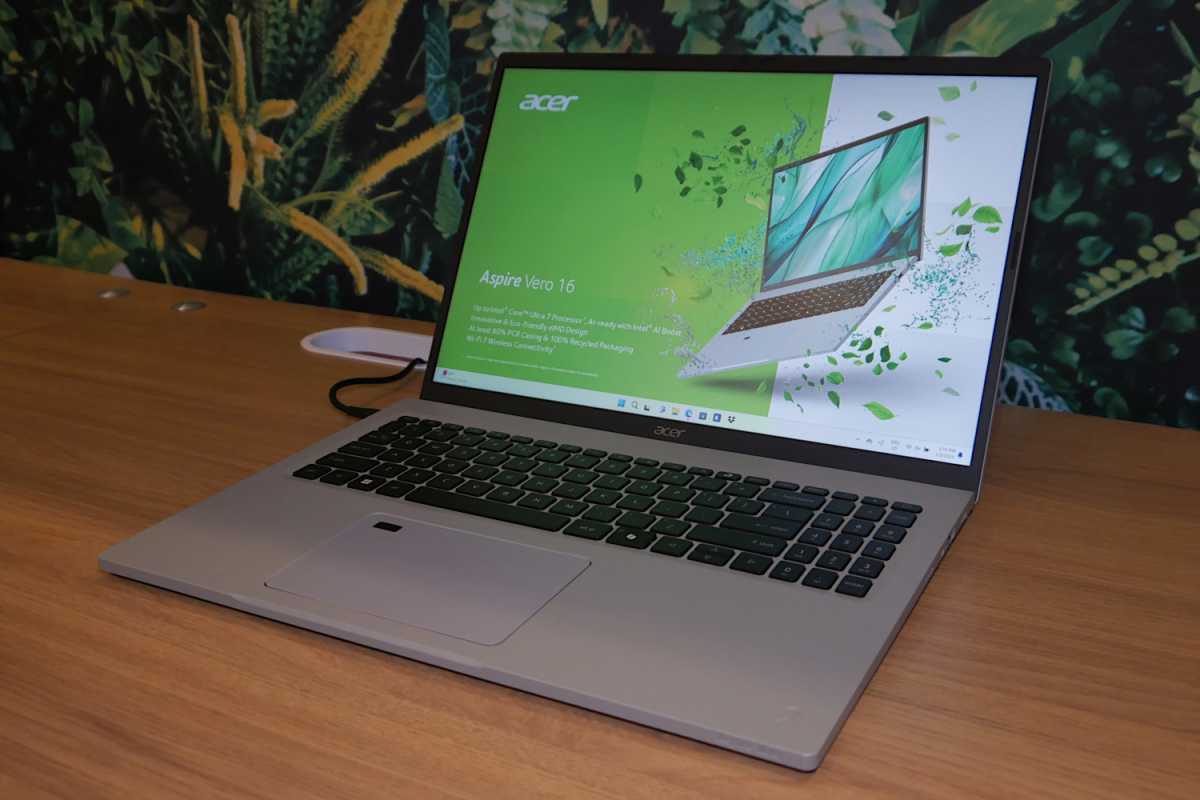
IDG / Matthew Smith
Want to go green? Acer’s Aspire Vero 16 deserves your attention. It’s a follow-up to the company’s prior (and, apparently, quite popular) Vero laptops, which are built from post-consumer resin (PCR) recycled plastics. The Vero 16 ups the PCR content to 60 percent, a big leap from the Acer Aspire Vero 14’s chassis, which contained 30 percent. Sustainability aside, I like how the Vero 16 looks. It has a flecked, textured appearance that’s unique to the Vero line.
The Aspire Vero 16’s specifications are modest, with up to Intel Core Ultra 7 processors, up to 16GB of memory, and up to 2TB of solid state storage. But the price tag is also modest: Acer says it’ll start at just $749.99 and is expected to ship April of 2024.
Acer Aspire 15 3D SpatialLabs Edition
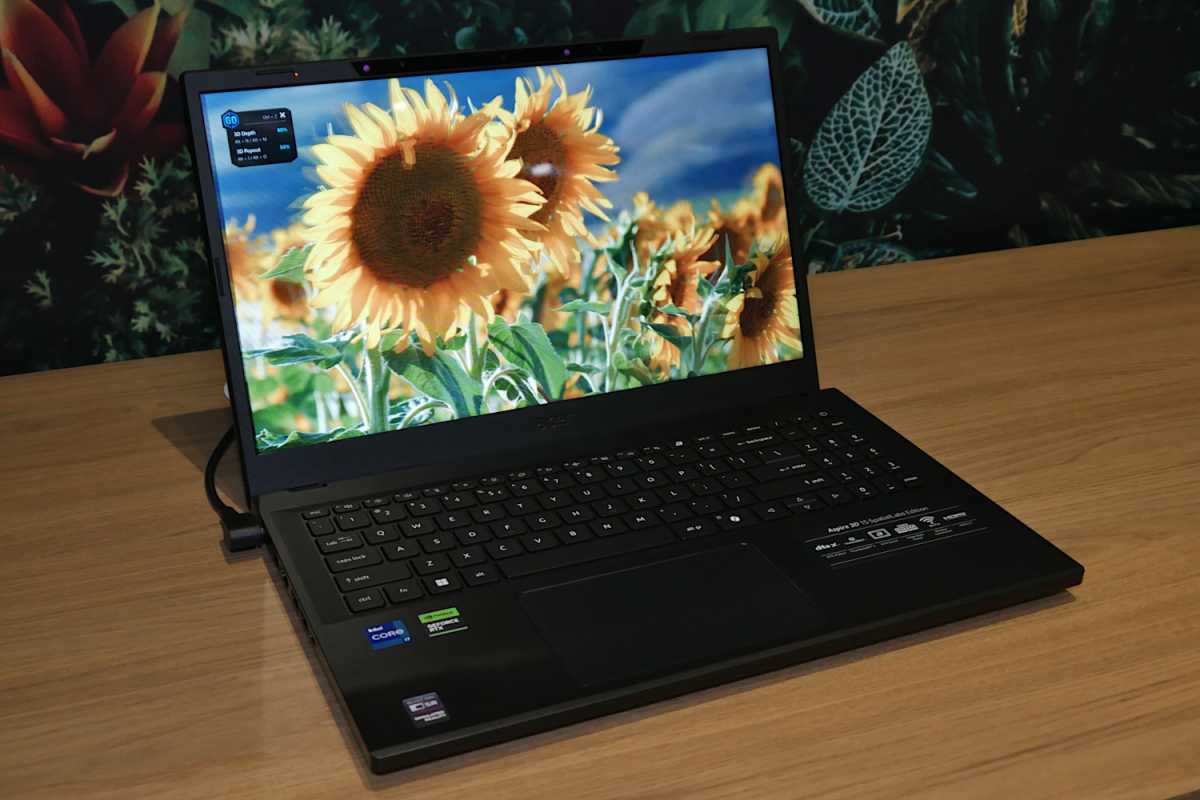
IDG / Matthew Smith
Acer was early to jump on board glasses-free 3D technology with its SpatialLabs sub-brand and now, at CES 2024, it’s coming to a more affordable price point. The Acer Aspire 15 3D SpatialLabs Edition starts at just $1,399.99, making it the most affordable laptop with the technology yet.
Haven’t heard of SpatialLabs? It’s Acer’s version of a glasses-free 3D that uses cameras to track a user’s eyes and provide two slightly different versions of a scene, creating a stereoscopic effect. There’s no spectacles, dongles, or peripherals required.
The laptop is also rather well equipped with up to an Intel Core i7-13620H processor, up to Nvidia RTX 4050 graphics, up to 32GB of memory, and up to 2TB of solid state storage. Acer expects it to ship in February.
Author: Matthew S. Smith
Matthew S. Smith is a freelance technology journalist with 15 years of experience reviewing consumer electronics. In addition to PCWorld, his work can be found on Wired, Ars Technica, Digital Trends, Reviewed, IGN, and Lifewire. Matthew also covers AI and the metaverse for IEEE Spectrum and runs Computer Gaming Yesterday, a YouTube channel devoted to PC gaming history.
